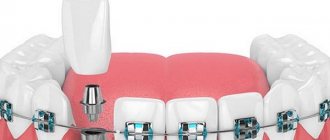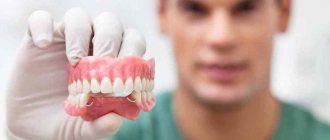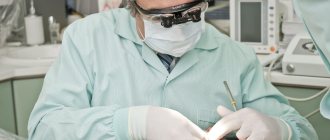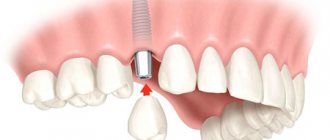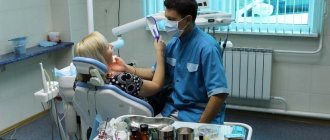Who is a periodontist?
A periodontist is a highly qualified dentist with a higher medical education who specializes in the correction and prevention of pathologies of soft tissues that fix segments in the jaw bone. The concept of “periodontium” includes:
- mucous membranes that line the surface of the mouth;
- soft gum tissue surrounding the segments;
- periodontium is a thin layer of connective tissue between the alveolar process and the cementum of the tooth;
- dental cement - mineral tissue surrounding the root;
- alveolar process - a dental bed penetrated by capillaries and nerve endings.
Who is better to contact?
How to protect yourself from force majeure? The secret here is simple. Of all the specialists who can help you, the most competent is not the hygienist, but the surgeon. It is he who has to deal with issues such as curettage and patchwork operations. He simply cannot be inexperienced due to the nature of his work. Therefore, it is better for you to find such a doctor for consultation. Of course, this does not mean that you will necessarily be operated on.
The first thing you need is to take a picture of the jaw. The panoramic X-ray image shows everything that is required to create a further treatment plan. For example, how much bone is destroyed near the teeth affected by the disease, as well as how deep the periodontal pockets are.
- What is curettage of a periodontal pocket - methods of performing the procedure
Panoramic photo of teeth
After this you will need a periodontist hygienist. Its task is to rid the patient of plaque and stone, and to conduct a course of therapy aimed at eliminating the inflammatory process.
If you live in a large city, your chances of finding a specialist are much higher. In megacities, it is not uncommon for doctors with scientific degrees to conduct consultations. They are at least more experienced than their younger colleagues. Also, some dentists undergo additional training in educational institutions to improve their skills in the field of periodontology. If there is evidence of such training, this means that the doctor has completed a course of at least 144 hours. This is quite enough to acquire not only the basic knowledge that was already acquired during initial training, but also more highly specialized information necessary for successful treatment.
Specialists must be sufficiently qualified
It is worse if the periodontist took short-term courses. They are usually three days long and cover only the basics, which are unlikely to make the therapist an expert periodontist.
When contacting a doctor, do not hesitate to ask for documents confirming that he has a specialized education in his specialty. After all, your health depends on it.
ITOP Certificate Level 1 (individually trained oral prophylaxis)
What diseases does a periodontist treat?
The area of expertise of a periodontist includes the treatment of gum diseases that have developed in periodontal tissues. The most common pathologies:
- Gingivitis is an inflammatory process of the periodontal soft tissues that occurs without disruption of the periodontal ligaments.
Only the gums are involved in the pathology. The first signs of the disease are bleeding and pain in the tissues surrounding the teeth. The pathology can occur in an acute form, which is also characterized by swelling, hyperemia of the mucous membrane, and itching. The chronic course of gingivitis causes virtually no discomfort, so a person is in no hurry to see a periodontist. Despite the asymptomatic course, the inflammatory process gradually progresses, complications arise - ulcerative-necrotic lesions, gum hypertrophy, detachment of mucosal areas, and others appear. The main cause of gingivitis is insufficient oral hygiene, which leads to the proliferation of bacteria. The periodontist usually prescribes conservative treatment, including removing plaque from teeth, using antiseptics, and antibiotics. - Periodontitis. Inflammatory periodontal disease, predominantly of an infectious nature. With periodontitis, destruction of the dentogingival ligaments occurs, and destruction of bone tissue develops. As the disease progresses, teeth begin to loosen and fall out. The disease is classified as polyetiological, since various reasons can lead to its development. Most often, the pathology develops due to the accumulation of bacterial plaque. In addition, periodontitis can occur due to poor heredity or gum injury. It often accompanies diabetes mellitus and is detected in hormonal disorders and other pathologies. A periodontist dentist, examining the mouth and jaw area, identifies the presence of periodontal pockets, bleeding, redness, swelling of the mucous membranes, and a heavy odor from the mouth.
- cavities. There is plaque on the teeth. Pus may be discharged from periodontal pockets. There is an exposure of the cervical zones of the segments, displacement of the teeth in the row, and their loosening. Treatment in the early stages is conservative, later - invasive.
- Periodontal disease. Non-inflammatory disease of periodontal tissues, characterized by a chronic course. The pathogenesis is based on circulatory dysfunction in the vessels supplying the periodontium. Violation of tissue trophism leads to the development of atrophic processes in the gum and bone tissues. Other causes of periodontal disease: malocclusion, smoking, decreased local immunity, hormonal imbalance, disruption of periodontal innervation, etc. The clinical picture of periodontal disease depends on the stage of the disease. Main symptoms: gum recession, pallor of the mucous membranes, increased spaces between units, their loosening. Bleeding gums are not typical for periodontal disease.
Treatment is aimed at strengthening the periodontium with the help of hygienic measures, drug therapy, and physiotherapy. If the degree is significant, the periodontist will suggest the surgeon
logical, orthopedic correction.
Examples of treatment schemes and methods at a periodontist
The treatment tactics for periodontal diseases are determined by a periodontist individually, taking into account the type and stage of the disease, the age and condition of the patient.
Gingivitis
Gingivitis gums
In case of inflammation in the initial stage, which is most often the result of insufficiently good oral care, no special treatment is required. It is necessary to improve PR hygiene, take vitamins, and have a balanced diet.
The main type of treatment for catarrhal gingivitis is antiseptic rinsing with solutions:
- Chlorhexidine 0.05% - after brushing your teeth 2-3 times a day;
- hydrogen peroxide 3% – for severe bleeding gums;
- potassium permanganate 1%;
- chlorophyllipt 0.2%;
- furatsilin 0.02% and others.
In case of severe inflammation, injections into the gingival papillae are indicated - glucose 40%, calcium chloride.
Rinsing with decoctions and infusions of herbs - calendula, chamomile, plantain, St. John's wort, celandine - is useful. Propolis, sea buckthorn and peach oil relieve inflammation well.
Physiotherapy for gingivitis
Gingivitis responds well to physical and laser therapy. Electrophoresis uses heparin, lidase, potassium iodide, enzymes, vitamins B1, B2, PP, C. The laser is used to excise overgrown areas of the gums with cauterization (electrocoagulation). Ultraviolet irradiation and UHF therapy work well.
Periodontitis
Periodontitis
Periodontitis accounts for 90-92% of all periodontal diseases. The main cause of pathologies is periodontal pathogenic microbes. The main manifestation of the moderate and severe stages is the formation of deep gum pockets, resorption of the alveolar process, and tooth mobility.
The full range of medicinal measures includes professional teeth cleaning, drug treatment, physiotherapy, surgery, and orthopedic treatment.
- During professional cleaning, microbial plaque and dental deposits are removed.
- Drug treatment involves anti-inflammatory local therapy using antiseptics (as for gingivitis) and NSAIDs (ortofen, metrogil denta). As well as antibiotic therapy (taking chloramphenicol, levomekol, summed). In moderate and severe stages, gingival injections of antibiotics are indicated.
- Physiotherapy – similar to gingivitis.
- Surgical treatment – curettage, flap surgery, gingivotomy.
- Orthopedic treatment – splinting, bridges, crowns, dentures.
Periodontal disease
Periodontal disease
Treatment of periodontal disease is carried out in 2 stages. On the 1st, symptomatic therapy is carried out.
- Remineralization (for the purpose of treating hyperesthesia) – deep fluoridation, sodium and potassium chloride films, hydroxyapatite, fluoride varnish.
- Filling wedge-shaped defects and enamel erosions.
- If required, selective grinding is performed.
The second stage involves improving blood microcirculation in periodontal tissues in order to eliminate hypoxia and normalize metabolism. Antisclerotic (mevacor) and vasotropic (trental) drugs, vitamin E, etc. are used.
If periodontal disease is complicated by inflammation, its treatment is carried out like periodontitis, but taking into account the characteristics of periodontal disease.
When to contact a periodontist
Patients who come to see a therapist are most often sent to the periodontist's office. After listening to complaints, collecting anamnesis, examining the oral cavity and identifying symptoms characteristic of gum disease, he gives a referral to a highly specialized specialist who is more competent in solving such problems:
- mucous membranes bleed during hygiene measures after chewing
food ania; - mucous membranes have changed color and are swollen;
- discharge of pus is noticed;
- a putrid smell appeared;
- the sensitivity of units to external stimuli has increased;
- grayish-white spots appeared on the gums;
- The intersegmental spaces have widened and food debris has become more likely to get stuck in them;
- stony deposits have formed on the enamel of the segments, a soft coating in hard-to-reach areas that cannot be removed with home hygiene products;
- there is pain while eating;
- The volume of the gums has decreased, the necks of the teeth have become exposed;
- periodontal pockets have formed;
- the teeth began to loosen;
- the position of the segments in the row has changed.
The periodontist will conduct a thorough examination, determine the periodontal status, make a reliable diagnosis, and prescribe adequate treatment. The duration and range of manipulations depends on the neglect of the process.
After completing therapy, it is necessary to visit the doctor according to the prescribed schedule for a follow-up examination and, if necessary, repeat the course of periodontal intervention. Your periodontist will help you maintain the health of your gums so that your smile can once again be admired by others.
Where does the search for a doctor begin?
There are many dental clinics in every city. Some of them are budgetary, others are private. There are as many doctors as there are institutions, but there is one caveat - not all specialists offering periodontist services to the population have specialized training in this area of dentistry. Therefore, not every dentist who wants to help you has the knowledge and skills necessary for this job.
Even in large cities, the number of experienced doctors (not ordinary therapists) is several people. Due to the incompetence of such dentists, people often lose teeth due to the development of inflammation and mobility. You need a treatment plan that is specific to the problem at hand. You will find out during the consultation.
Choose your doctor carefully
Among the traditional procedures:
- removal of plaque and tartar. Including subgingival. After all, it is he who causes various periodontal diseases;
- elimination of the inflammatory process. Includes the use of antiseptic agents with which periodontal pockets are washed. Topical preparations are applied to the gums;
- if required, the periodontist will refer you for pulp removal;
- splinting;
- curettage, patchwork surgery on the gums;
- In some cases, it is necessary to make a temporary removable denture for the duration of treatment. After periodontal treatment is completed, permanent dentures are installed.
Open curettage of periodontal pockets
As you can see, a specialist is required to have specific knowledge and skills that a therapist may not have. They concern not only periodontology, but also other areas - therapeutic, surgical dentistry, dentures, hygiene. Unfortunately, not every clinic employee can boast of such a volume of knowledge.
The harsh reality in the CIS is that a “specialist” turns out to be a lady who received her education about forty years ago and uses methods that modern specialists have long laughed at. But you won’t be laughing when she suggests injecting your gums or smearing them with some kind of gel that doesn’t stick to a wet surface at all.
Periodontology
Specifics of children's specialists
Children also experience periodontitis. The disease is diagnosed in approximately 3-5% of young children and adolescents, although most often it develops at the age of 9-10 years1. The problem is that the tissues of the oral cavity are still immature, constantly changing and rearranging, which is why they can react sharply to the slightest inflammation. In this case, the therapy will be little different from the treatment of an adult patient. Professional hygiene and physiotherapeutic measures will be required. Sometimes the lip frenulum is corrected if it has become one of the prerequisites for the development of periodontitis. In general, an integrated approach to diagnosis and treatment is required, since the causes may also lie in systemic pathologies.
Recently, lasers have been increasingly used to correct frenulums.
94% positive results of treatment of severe periodontitis
| Why is a dental microscope so important for the doctor and the patient? | High-quality professional hygiene = prevention of periodontitis |
Increased bleeding of the gums and bad breath cannot be ignored, since such symptoms may be the first sign of periodontitis. The disease is very common and requires early diagnosis and proper treatment, otherwise it can lead to tooth loss.
Periodontology is a branch of dentistry that deals with the treatment and prevention of diseases affecting the periodontal tissues (periodontium): gums, bone tissue, ligaments of the tooth. A consultation with a periodontist will help to recognize the problem in time and carry out the necessary treatment to eliminate it.
Cost of periodontist services and reviews
Prices and reviews are what potential patients are usually interested in. Treatment of periodontal diseases in adults and children can cost a fortune.
If you just need to rinse your mouth with chamomile or an antiseptic solution, that's one thing. But patchwork operations and curettage are more expensive services.
Let us give examples for Ukrainian and Russian clinics. To do this, we took the first establishments we came across. So, Ukrainian periodontists offer the following prices:
- ultrasonic removal of dental plaque on 1 jaw – from 200 to 400 hryvnia ($7.8 – $16);
- curettage – 75 hryvnia ($3);
- laser therapy for 1-3 teeth – 180 hryvnia ($7) per session;
- opening of a periodontal abscess – from 55 hryvnia (2.15 USD).
Removing tartar in dentistry
Russian clinics offer the following prices for their services:
- closed curettage (1 tooth) – 858 rubles/13.3 dollars;
- laser therapy of the gum mucosa – 858 rubles/session;
- removal of deposits from the periodontal pocket of 1 tooth – 231 rubles/3.6 dollars;
- splinting/splinting with intracanal fixation – 1750/3050 rubles (27-47.3 dollars).
Reviews of the work of specialists depend on how experienced the periodontist is for each patient. We wrote above how rare it is to find an expert in the field of periodontology.
This brings our article to its logical conclusion. We are waiting for your comments and don't forget to subscribe for updates!
What do periodontist surgeons do?
Specialists in this profile perform operations on the soft tissues of the oral cavity. There are many types of surgical interventions, and here are just some of the possible options for flap operations:
- resection of the gum pocket,
- removal of the gum edge,
- soft tissue transplantation - “replanting” soft tissues in the area of absorbed periodontal tissues,
- restoration of bone tissue for subsequent implantation,
- gum grafting to give an aesthetically pleasing smile,
- plastic surgery of the frenulum, etc.
A periodontist deals with all kinds of gum surgery.
To avoid serious gum diseases, it is enough to carefully monitor their condition and maintain a high level of hygiene. No one is immune from problems with teeth and gums, but we can reduce any risks to the bare minimum. Remember to brush your teeth twice a day, rinse your mouth after meals, and floss. In order to be able to recognize the pathology in time and immediately begin its treatment, it is important not to miss scheduled preventive examinations at the dentist, at least twice a year.
- According to WHO.
